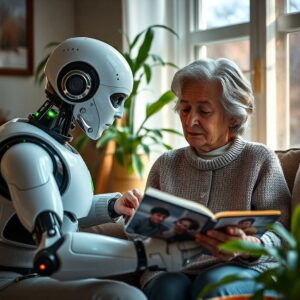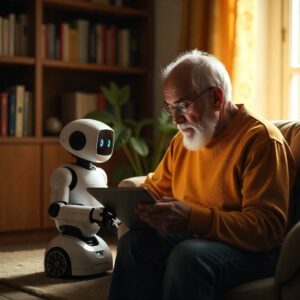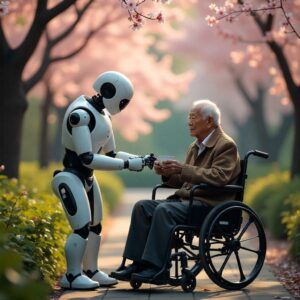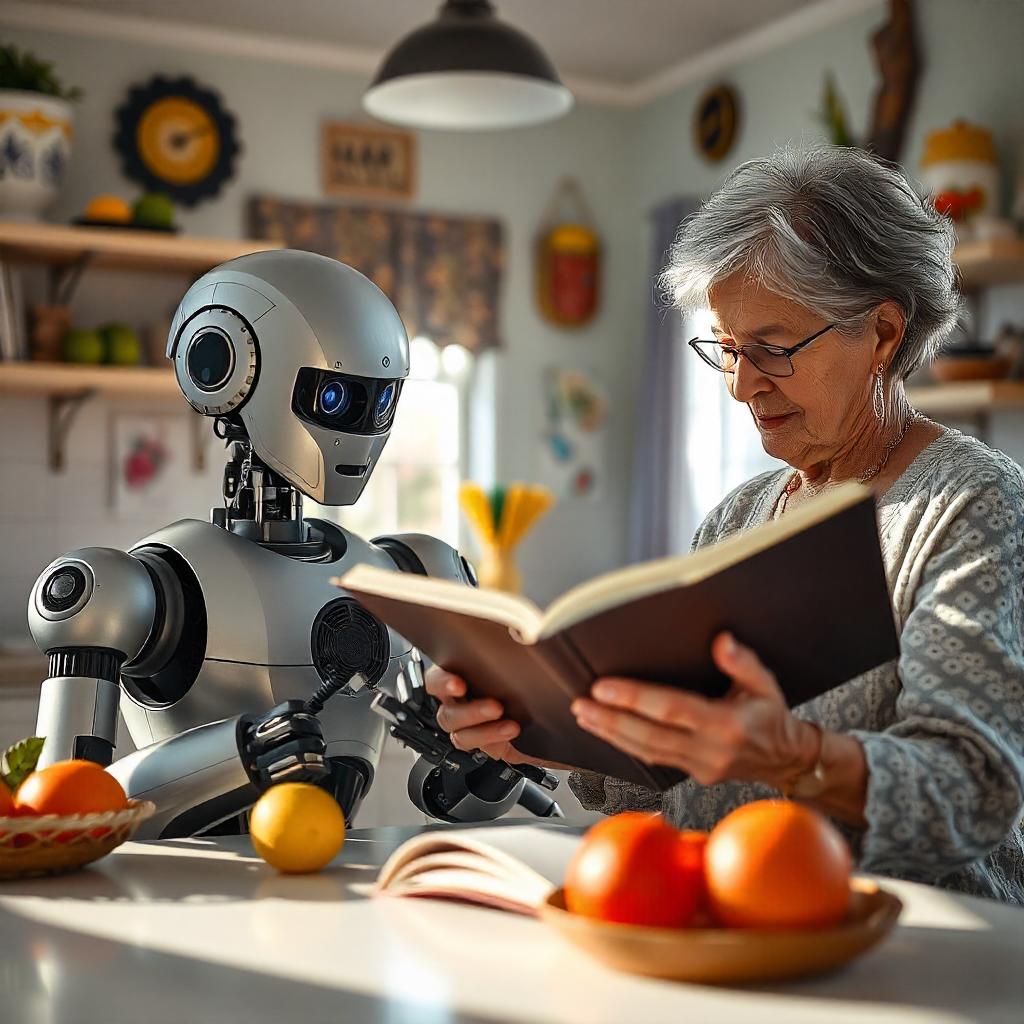Picture this: a frail older adult, trembling with anxiety in the dead of night, calling out for comfort. Instead of a soft voice and reassuring human touch, a sleek metal robot whirs into the room, reciting pre-programmed lines in its synthetic monotone. The idea of entrusting our most vulnerable—those struggling with loneliness, dementia, or fragile health—to unfeeling machines may seem like dystopian fiction. Yet, in some corners of the tech world, such scenarios are hailed as the next breakthrough in senior care. They’re not. No matter how sophisticated artificial intelligence becomes, or how dexterous robotic arms get, there is one thing no gadget can replicate: genuine human warmth.
See what our male caregivers have to offer >

The Allure of High-Tech Solutions—and Their Real Limits
Telehealth, Wearables, and Smart Homes
Technology undeniably brings useful innovations to the caregiving sector. Telehealth services let seniors consult healthcare professionals without the hassle of travel. Wearable devices can detect falls and alert family or emergency services in seconds. Smart-home features—like automated lights, voice-activated assistants, or sensor-based alarms—help reduce accidents and make day-to-day activities easier. Such tools certainly have a place in modern elder care.
But while data-tracking, remote diagnostics, and automation boost efficiency, they fall short in addressing the complexity of human emotions. A sensor may detect an irregular heartbeat, but it can’t see the look of confusion on a senior’s face. A virtual appointment might diagnose a bladder infection, yet it won’t notice tears of loneliness. These technologies can be lifesavers, but they are limited to what they can measure or automate.
Learn more about telehealth services and how they integrate with in-person care at Age UK.
The Myth of Robotic Compassion
Despite their advanced sensors and AI-driven algorithms, robots cannot truly empathize. Caring for older adults is not just about dispensing medications on schedule or reminding them to lock the door—it’s about understanding unspoken fears, interpreting subtle changes in behavior, and offering emotional support. A robot might respond to the phrase “I feel scared” with a pre-programmed reassurance, but it cannot replace the sincere, compassionate presence that a live human caregiver provides.

Specific Tasks Machines Just Can’t Handle
- Navigating Complex Spaces
Stairs, narrow hallways, or cluttered rooms pose huge challenges for robots, which are typically designed for controlled, obstacle-free environments. Meanwhile, a human caregiver can instinctively adjust to any setting—no reprogramming required. - Managing Incontinence Care
Changing incontinence products and maintaining personal hygiene require both skill and a gentle touch. A mechanical arm has neither the dexterity nor the compassion to ensure the older adult feels dignified and at ease. - Handling Dementia-Related Emergencies
If a person with dementia attempts to wander outside at 2 AM, a robot may not even register the urgency—or might be confined to a set path or speed. A human caregiver can run after them, calmly guide them back, and de-escalate a potential crisis on the spot. - Providing Genuine Comfort
Machines aren’t equipped to deliver a reassuring hug or recognize the emotional nuance behind a trembling voice. The empathetic closeness that many seniors crave in their most vulnerable moments remains strictly in the domain of human touch.

Why Authentic Human Care Will Always Matter
Emotional Needs Trump Efficiency
Older adults often grapple with loneliness, anxiety, or cognitive decline. While a device may track heart rate or medication compliance, it cannot share a genuine conversation, reminisce about a favorite hobby, or offer comforting words tailored to a loved one’s personal memories. These very human elements are crucial for mental well-being, particularly when physical health is also fragile.
Real-Time Adaptability
Humans can read subtle signals—tone of voice, facial expressions, posture—that hint at distress, discomfort, or confusion. We adjust our behavior instantly, offering more patience or stepping back if needed. Robots rely on programmed responses that only work as long as situations remain predictable. The moment a scenario deviates from the script, machines flounder.
Ethical and Cultural Considerations
There’s also a moral dimension: many older adults cherish personal interaction and derive a sense of respect and validation from it. Delegating intimate care to a machine can feel dehumanizing. Culture, language barriers, and deeply ingrained personal preferences call for flexible, nuanced engagement—a capability only humans truly possess.

Using Technology Where It Counts
While robots don’t belong at the bedside performing delicate care, other forms of technology can be transformative when used wisely. Remote monitoring devices, for example, offer peace of mind to families who live far away, while advanced communication tools reduce isolation by linking seniors with loved ones. According to The King’s Fund, digital platforms that streamline care coordination or provide teleconsultations can enhance accessibility—as long as they function as supplements, not substitutes, for in-person caregiving.
A Future Shaped by Humanity, Not Machines
It’s tempting to think that robots or AI could solve labor shortages and alleviate caregiving burdens. But the deeper reality is that older adults need more than task-oriented help; they need genuine human companionship. Technology should serve as a support system, assisting with reminders, safety, and remote oversight, rather than replacing caregivers’ empathy and hands-on skill.
As impressive as tomorrow’s artificial intelligence may be, it will never wrap a comforting arm around a trembling shoulder, nor sense the sorrow hidden behind a quiet stare. In an age where automation creeps into every corner of life, the caregiving profession stands firm as one domain that demands an authentic, human presence. No code or circuit can replicate the intangible warmth that passes from one hand to another in a moment of true compassion. We can—and should—use technology to make life better for seniors, but we must never forget the irreplaceable power of a person who cares.

